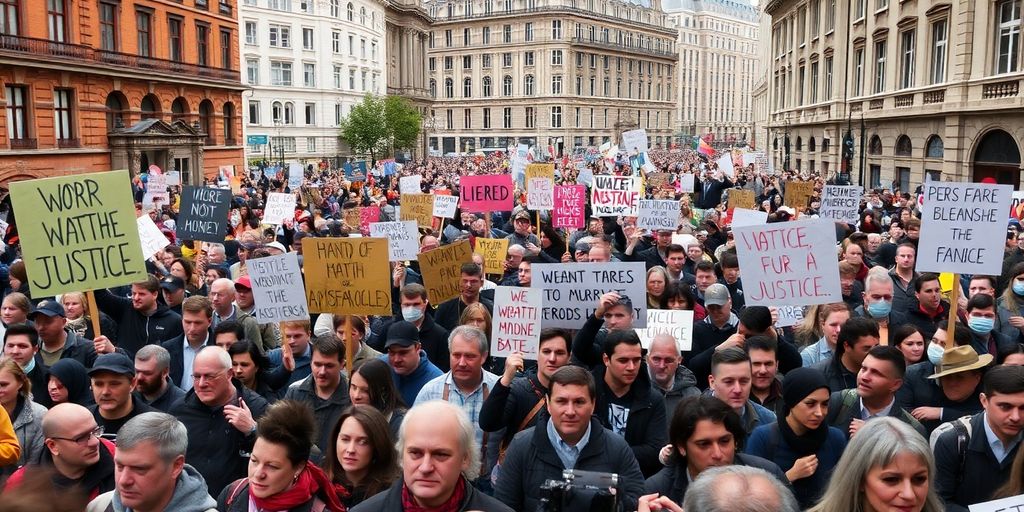Tens of thousands of protesters, primarily students, have taken to the streets across Serbia in response to a deadly railway disaster that claimed 15 lives last November. The protests, which began as a student-led movement, have evolved into a nationwide call for government accountability and an end to corruption, posing a significant challenge to President Aleksandar Vucic’s administration.
Key Takeaways
- Mass Mobilization: Tens of thousands of students and citizens participated in protests across various cities, including Kragujevac and Nis.
- Commemoration of Victims: Demonstrators held moments of silence to honor the victims of the November railway station disaster.
- Government Response: The Serbian government has faced pressure, leading to the resignation of key officials, including the Prime Minister.
- Demands for Change: Protesters are calling for transparency regarding the disaster, justice for the victims, and increased funding for education.
Background of the Protests
The protests were ignited by a tragic incident on November 1, 2024, when a roof collapsed at a newly renovated train station in Novi Sad, resulting in the deaths of 15 people. Many citizens attribute this disaster to systemic corruption and negligence within the government, particularly under President Vucic’s decade-long rule.
The Protests Unfold
Starting in December 2024, students organized blockades at universities, which quickly gained momentum. On February 15, 2025, a significant protest in Kragujevac saw students traveling from across the country to demand justice. They symbolically blocked a major boulevard for 15 hours and 15 minutes, honoring the victims.
In Nis, on March 1, thousands gathered to commemorate the victims, standing in silence at 11:52 AM, the exact time of the disaster. The atmosphere was charged with chants of “Serbia has risen” and calls for a functional state free from corruption.
Government’s Reaction
In response to the growing unrest, the Serbian government has initiated an anti-corruption campaign and has seen the resignation of Prime Minister Milos Vucevic and two other ministers. Prosecutors have charged 13 individuals in connection with the roof collapse, but many protesters feel these actions are insufficient.
President Vucic has accused the demonstrators of being backed by foreign powers, labeling the protests as attempts to destabilize Serbia. Despite this, the protests have continued, with students demanding:
- Publication of documents related to the station roof collapse.
- Justice for those responsible for the disaster.
- Dismissal of charges against protesting students.
- Increased funding for higher education.
The Future of the Movement
The protests have sparked a broader movement against corruption in Serbia, with citizens from various sectors joining the students. The demonstrations reflect a growing discontent with the government and a desire for systemic change. As the protests continue, the students remain resolute in their demands, aiming to create a better future for Serbia.
The situation remains fluid, with the potential for further escalation as both sides prepare for ongoing confrontations. The outcome of these protests could significantly impact the political landscape in Serbia and the future of President Vucic’s administration.
Sources
- Thousands rally in Serbia as anger over corruption swells, Reuters.
- Serbian protesters pressure government over railway disaster, Reuters.
- Thousands protest in Serbia to honour railway station disaster victims | Protests News, Al Jazeera.
- Protests over train station collapse grip Serbia, demand government action | Corruption News, Al Jazeera.
- Serbian protesters block key bridge and roads to mark 100 days since deadly canopy collapse, AP News.






